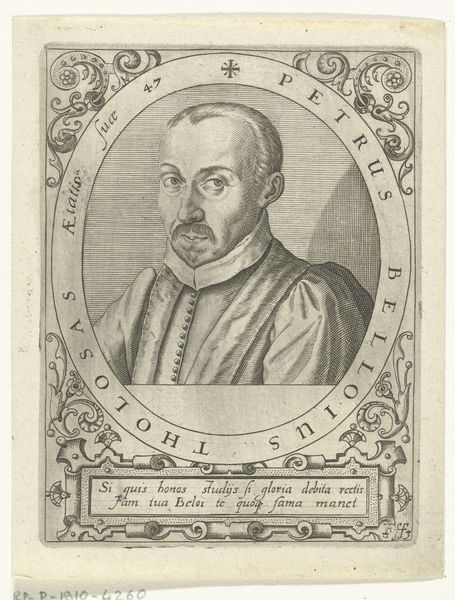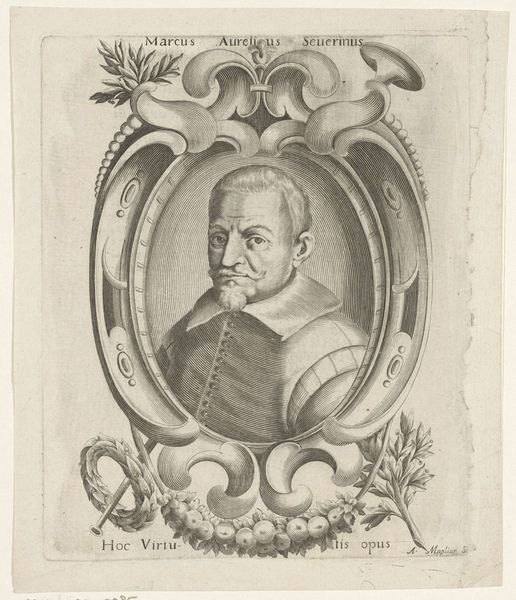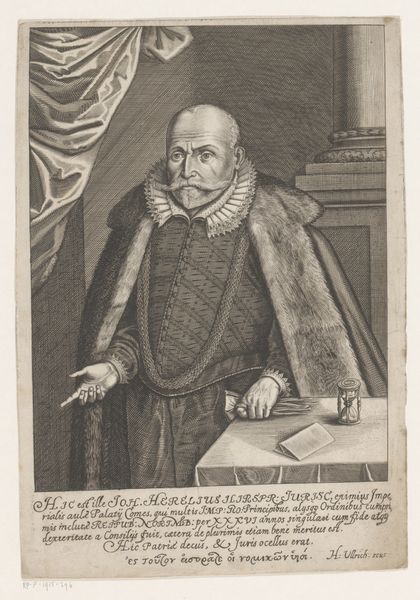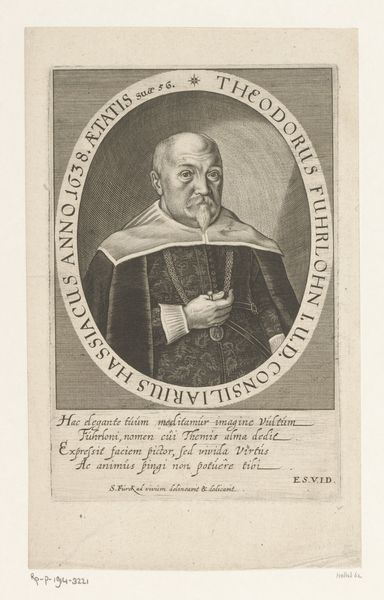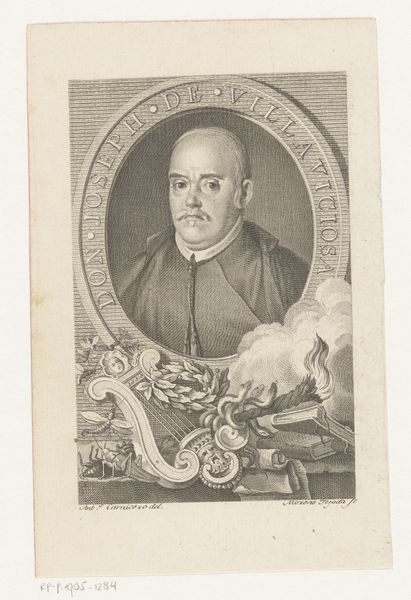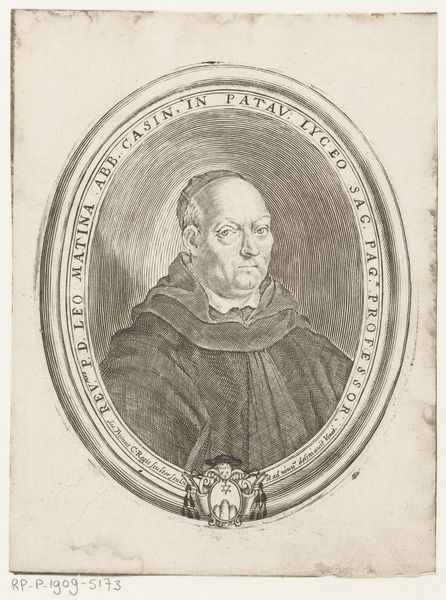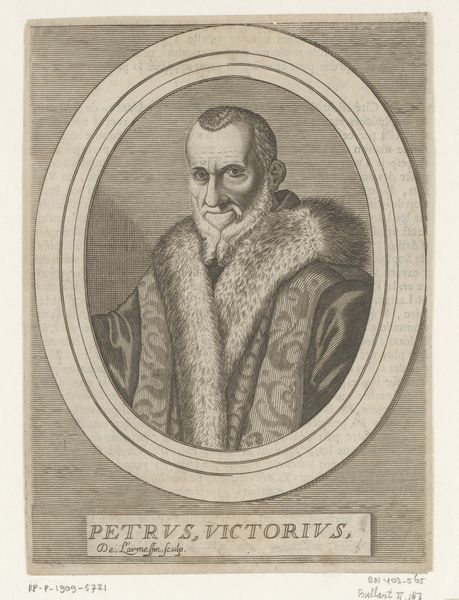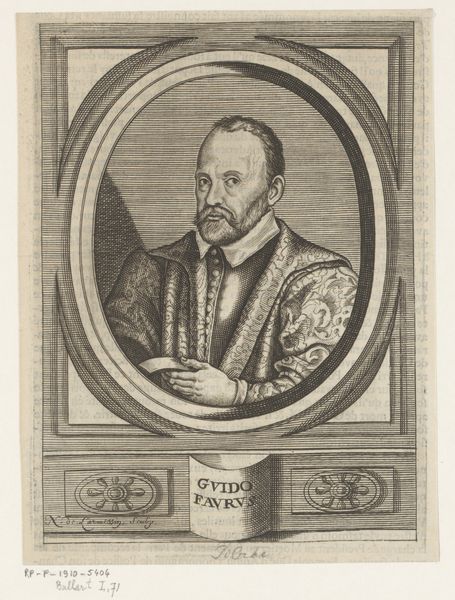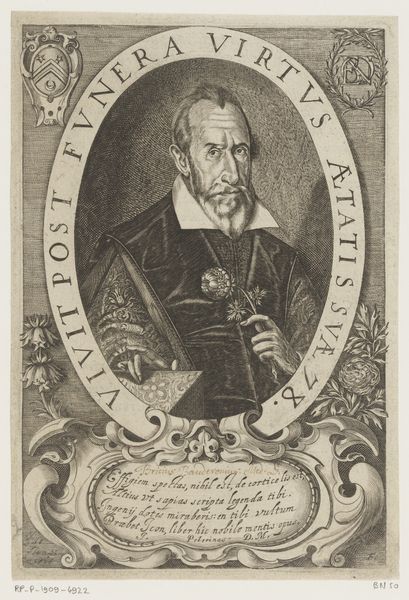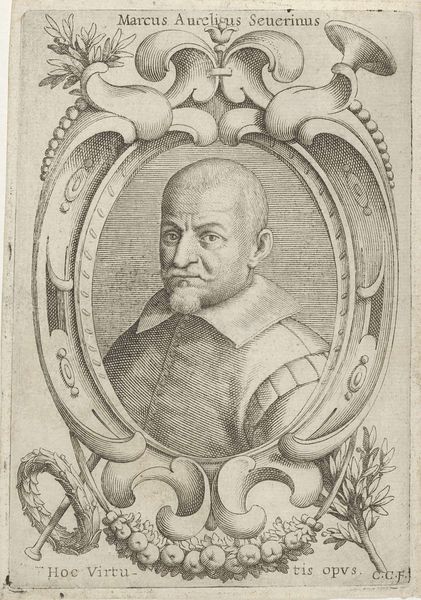
print, engraving
#
portrait
#
medieval
# print
#
old engraving style
#
mannerism
#
engraving
Dimensions: sheet: 18.7 x 13 cm (7 3/8 x 5 1/8 in.); cut within platemark
Copyright: National Gallery of Art: CC0 1.0
Curator: Here we have a striking engraving, "Bon de Broé," created in 1588 by Thomas de Leu. Editor: My first thought is the intensity. The detail is exquisite, the man's gaze… he’s staring right through you. Curator: Indeed. The oval frame itself feels symbolic, almost constricting, containing his essence. It reminds me of similar portrait styles that carry messages about the subject's virtues or social standing, often found adorning religious texts or leadership propaganda. Editor: Given the timeframe, religious tensions were definitely simmering beneath the surface of these types of works, adding to that sense of contained potential. Look at his robes, the darkness of the material emphasizing the opulence; they are a clear demonstration of wealth, power, and privilege. The inscription encircling his portrait is intriguing. I can make out references to love, court, and judgment, along with what I presume is the family crest in the upper corner. Do these symbols hint at hidden associations? Curator: They most likely refer to aspects of his life and accomplishments. Inscriptions around portraits were a popular means of signifying the person’s attributes, allegiances, or moral qualities within their immediate community. The image becomes a testament to their identity. Editor: He looks quite somber, but also intelligent. This Bon de Broé held positions within both the church and senate. And I think it’s worth noting that such men were participants of systematic cruelty in that historical period, acting in many cases as functionaries of violence. Curator: I can't argue that the era was a crucible of conflict. From an iconographic standpoint, consider the clean lines and clear depiction in de Leu's rendering, perhaps echoing a desire for control in a world increasingly viewed as uncertain. Even today we are inclined to perceive patterns, codes, or emblems that give insight into historical periods of crisis, like ours. Editor: This portrait freezes a specific figure within a crucial epoch. The clarity of the engraving captures more than likeness, it forces us to address complex issues of class, institutional culpability, and representation. That’s what stays with me. Curator: A thought-provoking synthesis indeed; an intricate mirror reflecting societal structures from centuries ago.
Comments
No comments
Be the first to comment and join the conversation on the ultimate creative platform.
